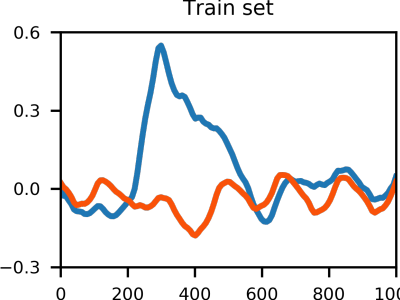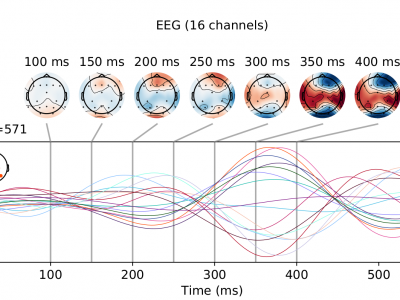EEG
The data set is collected using Neurosky MindWave 2.0 Headset. It uses a single dry electrode placed at FP-1 position for the acquisition of EEG signals. The data is collected from Healthy Individuals and Epileptic Patients performing different Activities of Daily Living (ADLs) in an unconstraint environment.
- Categories:
 1483 Views
1483 ViewsThe data acquisition process begins with capturing EEG signals from 20 healthy skilled volunteers who gave their written consent before performing the experiments. Each volunteer was asked to repeat an experiment for 10 times at different frequencies; each experiment was trigger by a visual stimulus.
- Categories:
 35872 Views
35872 ViewsReliable fatigue assessment is desired in many different fields and environments. An efficient fatigue evaluation tool is promising in reducing fatal errors and economic loss in industrial settings. This dataset contains electroencephalographic (EEG) signals obtained
from an 8-channel OpenBCI headset, as well as biometric measurements obtained from the Empatica E4 wristband. Signals obtained from the E4 include: Photopletismography (PPG), heart rate, inter-beat interval (IBI), skin temperature and Electrodermic Activity
- Categories:
 1356 Views
1356 Views
Dataset asscociated with a paper in Computer Vision and Pattern Recognition (CVPR)
"Object classification from randomized EEG trials"
If you use this code or data, please cite the above paper.
- Categories:
 2348 Views
2348 ViewsDataset description
This dataset contains EEG signals from 73 subjects (42 healthy; 31 disabled) using an ERP-based speller to control different brain-computer interface (BCI) applications. The demographics of the dataset can be found in info.txt. Additionally, you will find the results of the original study broken down by subject, the code to build the deep-learning models used in [1] (i.e., EEG-Inception, EEGNet, DeepConvNet, CNN-BLSTM) and a script to load the dataset.
Original article:
- Categories:
 3088 Views
3088 Views
Dataset asscociated with a paper in IEEE Transactions on Pattern Analysis and Machine Intelligence
"The perils and pitfalls of block design for EEG classification experiments"
DOI: 10.1109/TPAMI.2020.2973153
If you use this code or data, please cite the above paper.
- Categories:
 1695 Views
1695 Views
EEG signals of various subjects in text files are uploaded. It can be useful for various EEG signal processing algorithms- filtering, linear prediction, abnormality detection, PCA, ICA etc.
- Categories:
 722 Views
722 ViewsThe dataset consists of EEG recordings obtained when subjects are listening to different utterances : a, i, u, bed, please, sad. A limited number of EEG recordings where also obtained when the three vowels were corrupted by white and babble noise at an SNR of 0dB. Recordings were performed on 8 healthy subjects.
- Categories:
 1495 Views
1495 ViewsThe EEG data were acquired from 16 healthy young adults (age range 22 - 30 years) with no neurological, physical, or psychiatric illness history. All the participants were naive BCI users who had not participated in any related experiments before. Informed consent was received from all participants.
- Categories:
 5580 Views
5580 ViewsMobile Brain-Body Imaging (MoBI) technology was deployed at the Museo de Arte Contemporáneo (MARCO) in Monterrey, México, in an effort to collect Electroencefalographic (EEG) data from large numbers (N = ~1200) of participants and allow the study of the brain’s response to artistic stimuli, as part of the studies developed by University of Houston (TX, USA) and Tecnológico de Monterrey (MTY, México).
- Categories:
 474 Views
474 Views




